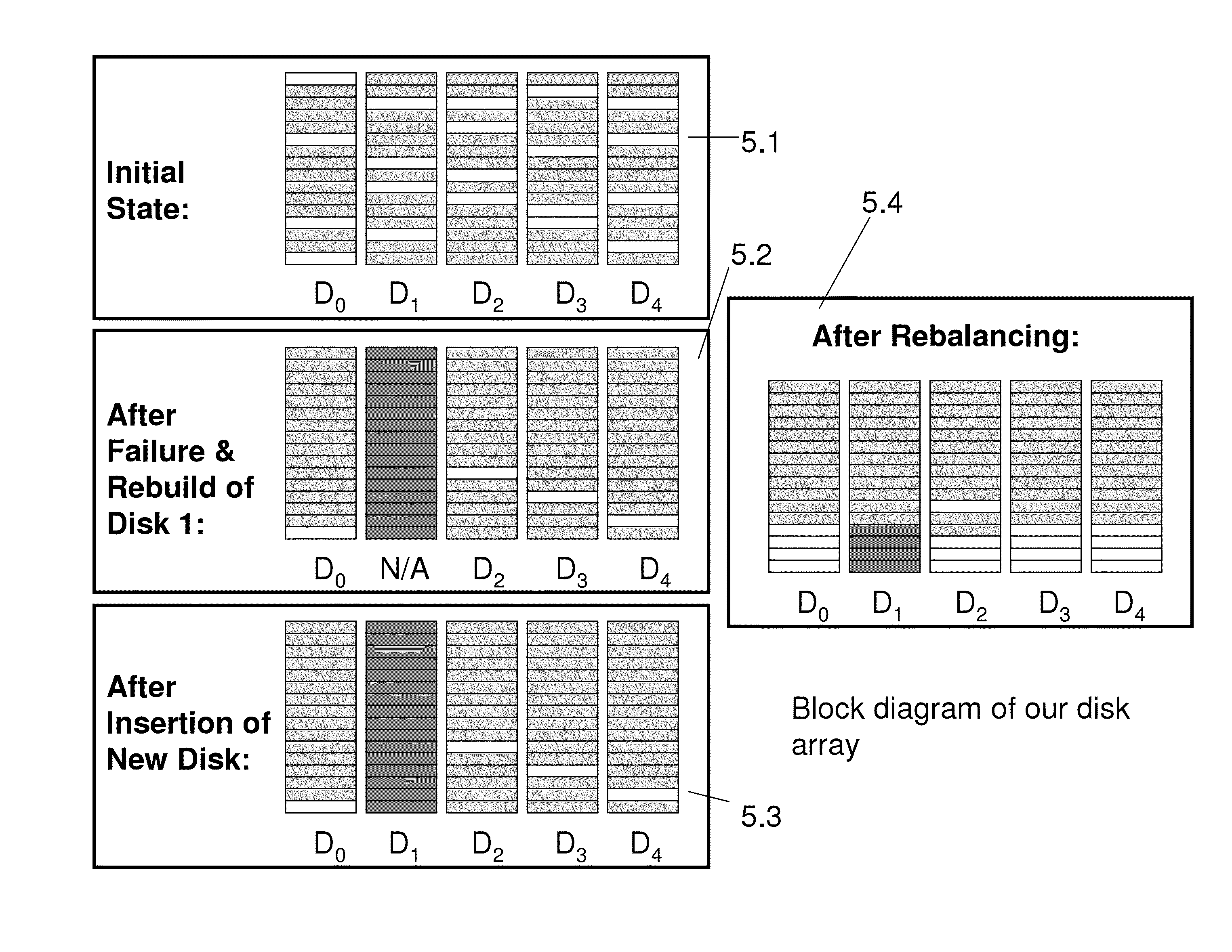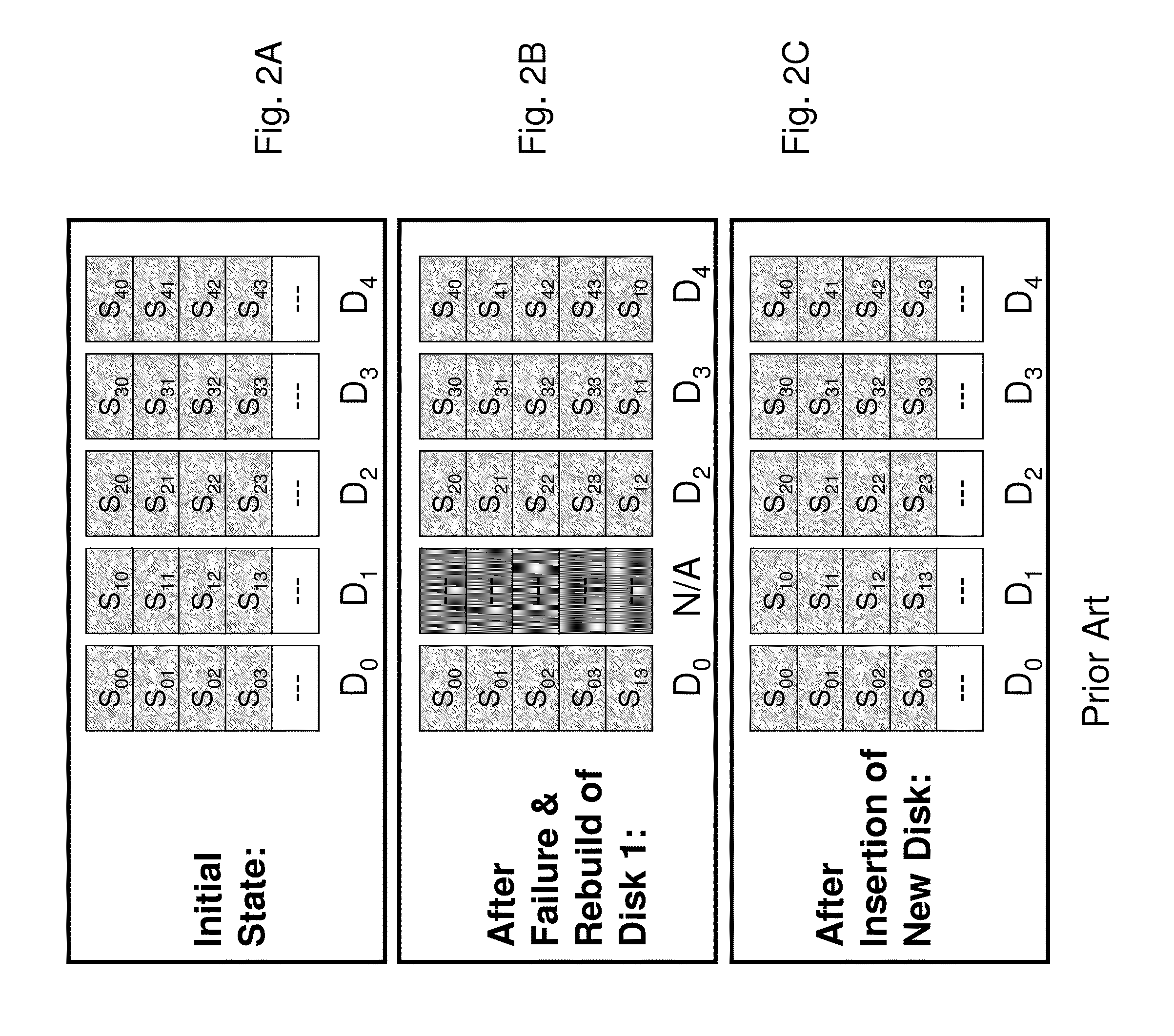Data protection in a random access disk array
a random access disk and array technology, applied in the direction of fault response, memory adressing/allocation/relocation, instruments, etc., can solve the problems of one failure per mirrored pair without data loss, price is the loss of half the capacity, and the failure always loses some data
- Summary
- Abstract
- Description
- Claims
- Application Information
AI Technical Summary
Benefits of technology
Problems solved by technology
Method used
Image
Examples
Embodiment Construction
[0079]The present invention, in some embodiments thereof, relates to data protection in a random access disk array, and, more particularly, but not exclusively, to a variation of a RAID system to provide for data protection.
[0080]The present embodiments may provide a data protection system for a RAID memory device containing random access media, which is based on logical to physical mappings at fine granularity on the random access media. By fine granularity is meant that the mapping is to the block size, the block being the smallest unit to which data is written, 4k being a typical block size. According to the present embodiments there is no need to keep dedicated spare space, rather one can use ordinary space to store recovered data by changing the mapping information.
[0081]The embodiments may use variable sized stripes to reduce parity overhead and allow easy addition / removal of disks.
[0082]The embodiments may balance and re-balance data across the various disks since the placeme...
PUM
 Login to View More
Login to View More Abstract
Description
Claims
Application Information
 Login to View More
Login to View More - R&D
- Intellectual Property
- Life Sciences
- Materials
- Tech Scout
- Unparalleled Data Quality
- Higher Quality Content
- 60% Fewer Hallucinations
Browse by: Latest US Patents, China's latest patents, Technical Efficacy Thesaurus, Application Domain, Technology Topic, Popular Technical Reports.
© 2025 PatSnap. All rights reserved.Legal|Privacy policy|Modern Slavery Act Transparency Statement|Sitemap|About US| Contact US: help@patsnap.com



